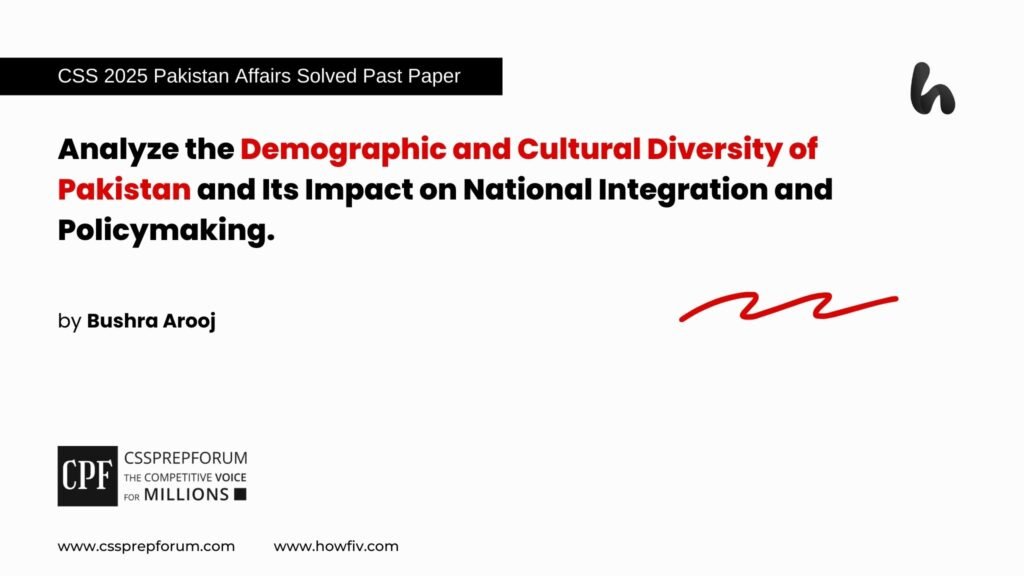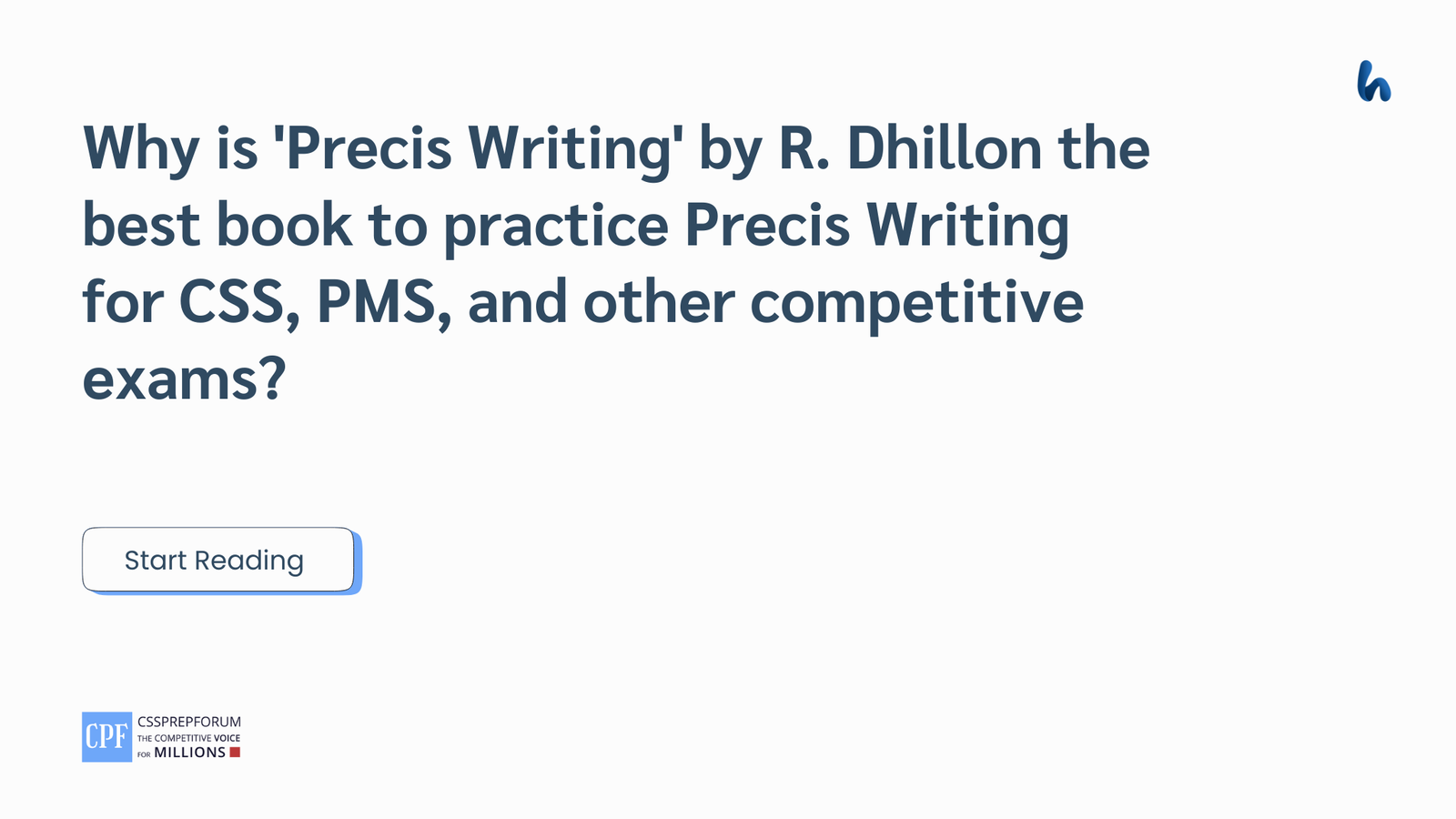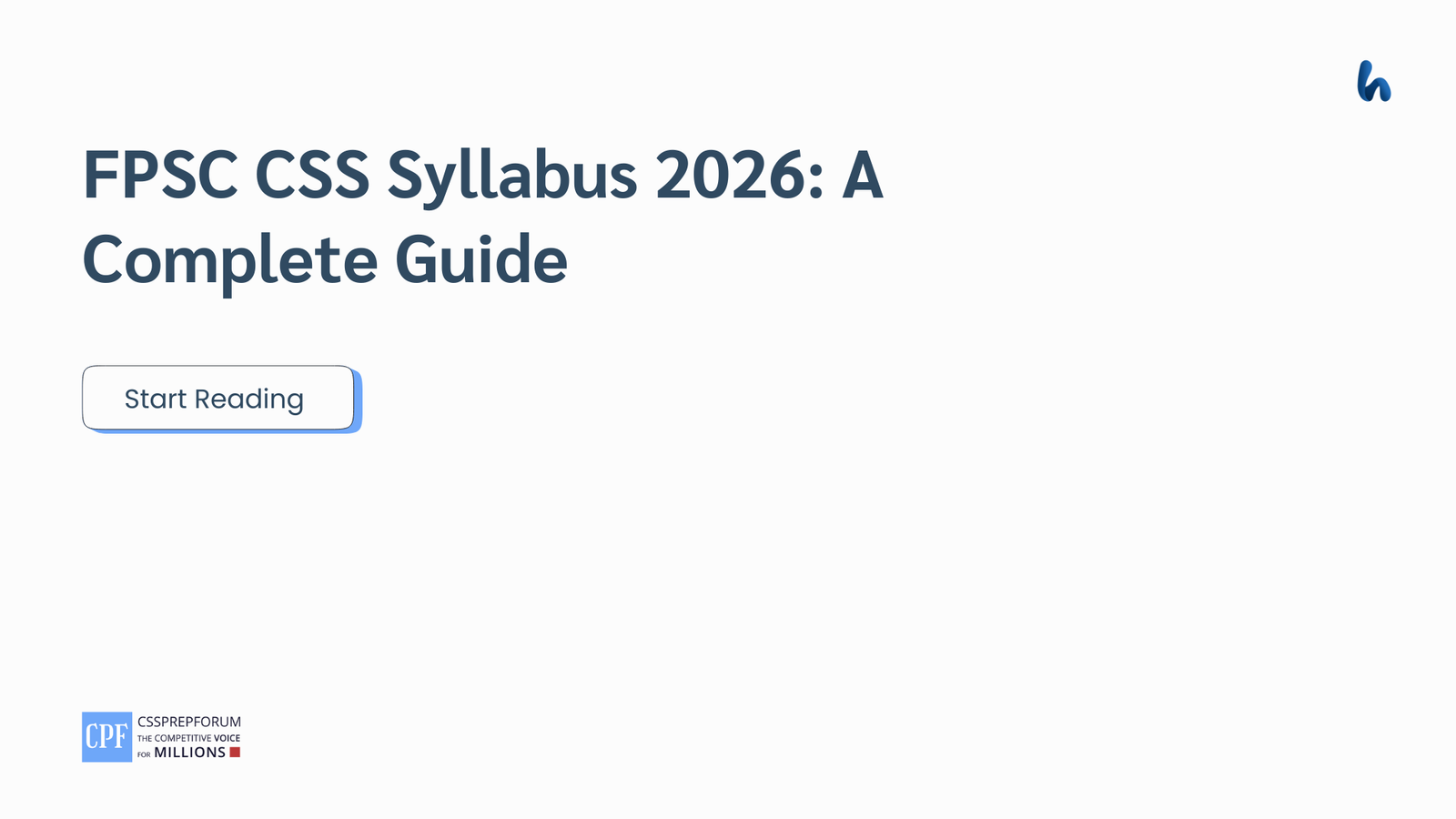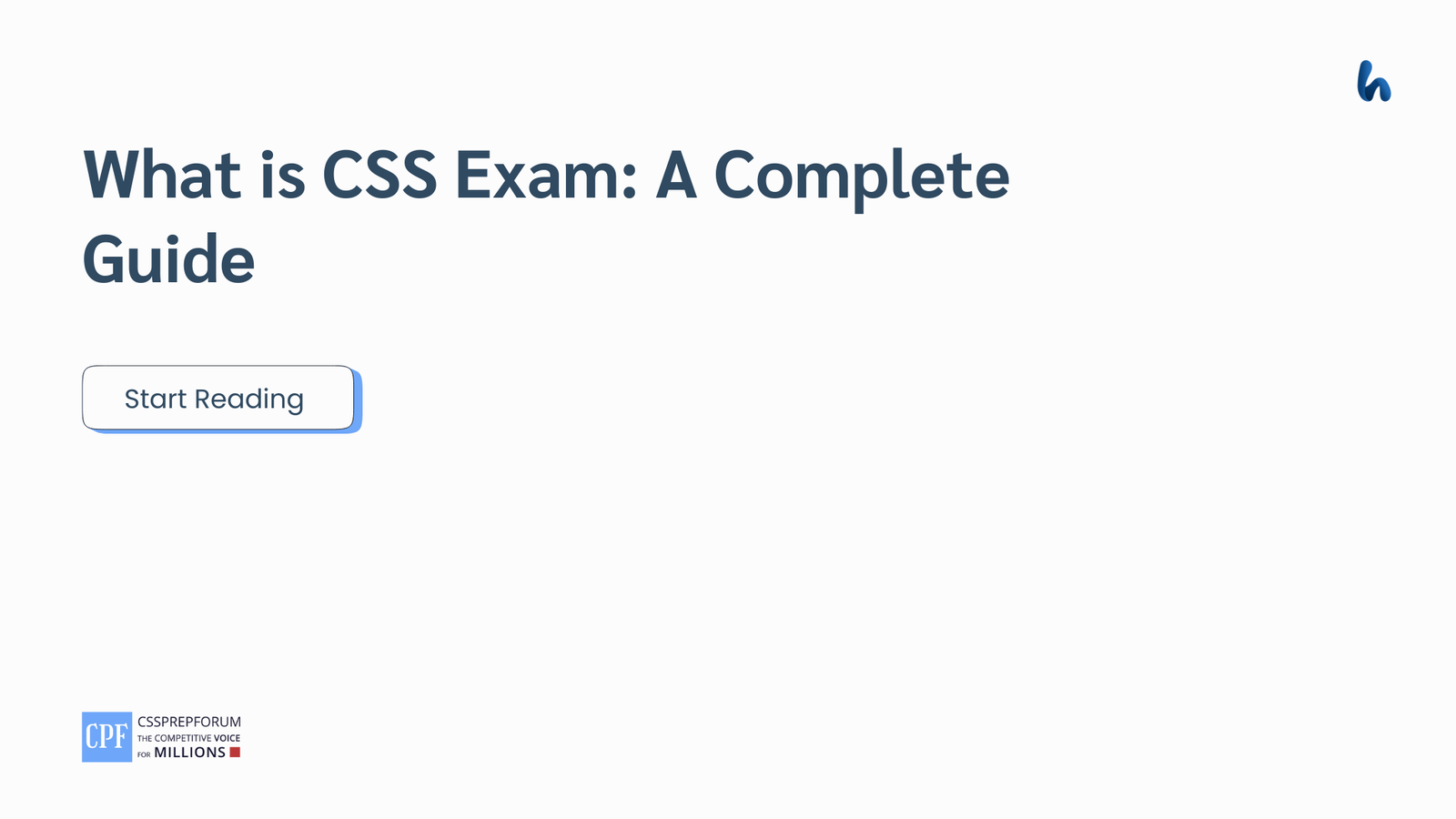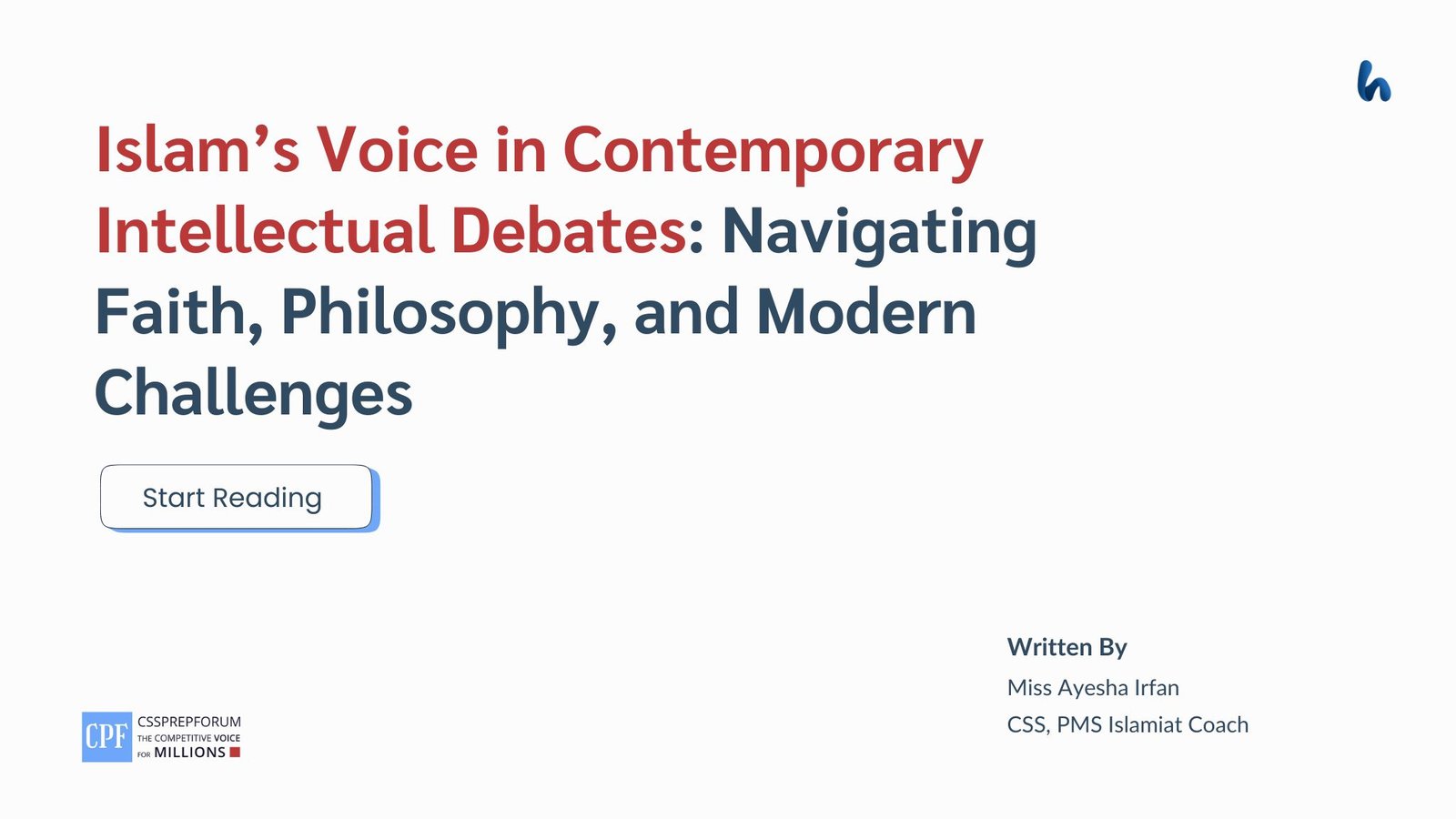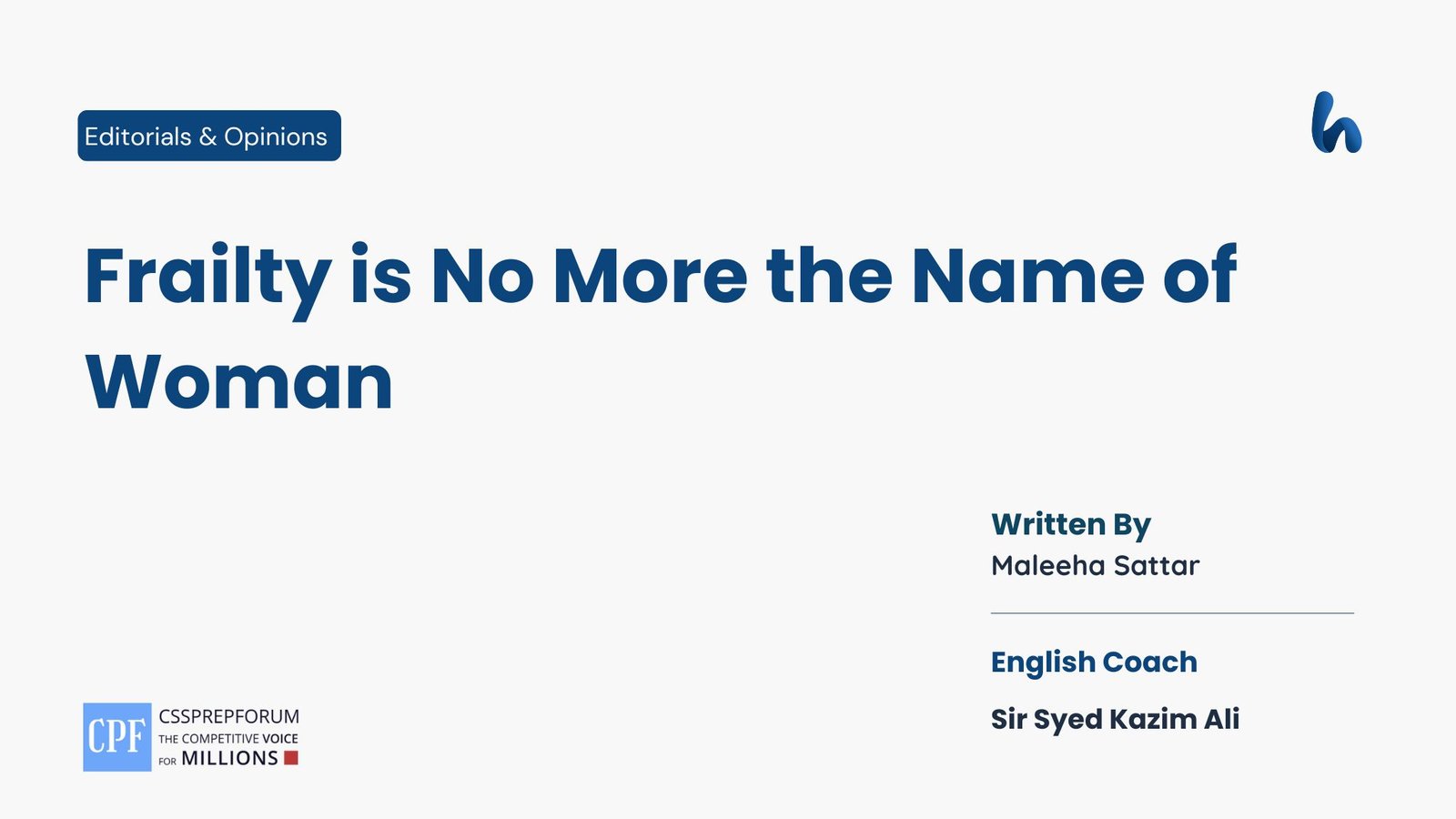CSS 2025 Solved Pakistan Affairs Past Papers | The Demographic and Cultural Diversity of Pakistan
The following question of CSS Pakistan Affairs 2025 is solved by Miss Bushra Arooj, the best Pakistan Affairs Coach, on the guided pattern of Sir Syed Kazim Ali, which he taught to his students, scoring the highest marks in compulsory subjects for years. This solved past paper question is uploaded to help aspirants understand how to crack a topic or question, how to write relevantly, what coherence is, and how to include and connect ideas, opinions, and suggestions to score the maximum.

Question Breakdown
In this question, the examiner asked about prolonged diversity in Pakistan. One can obtain the highest marks in the question by critically analyzing the cultural and demographic diversity in Pakistan and highlighting their consequences on national unity. Afterward, a thorough analysis of the impacts of this diversity on national integration and policymaking should be discussed. At last, an impactful conclusion should be written to end the question in a precise manner.
Outline
1- Introduction
- ✓ Overview of Pakistan’s demographic and cultural diversity as a multi-ethnic, multi-lingual, and multi-religious society
- ✓ Significance of National Integration and policymaking in a diverse society
2- An Analysis of Demographic diversity in Pakistan
- ✓ Ethnic variations along different demographics
- Amalgamation of variety of ethnicities, for instance, Punjabi, Sindhi, Baloch, Saraiki, Pashtuns, Muhajirs, Hazaras, and Kalash.
- Case study: The Pashtun Tahafuz Movement (PTM), ethnic identity, security concerns, and governance challenges.
- Case study: The Baloch insurgency, political grievances, and their demands for autonomy.
- Amalgamation of variety of ethnicities, for instance, Punjabi, Sindhi, Baloch, Saraiki, Pashtuns, Muhajirs, Hazaras, and Kalash.
- ✓ Sectarian differences among various sections of the country
- A number of religious groups in the country, like Sunni, Shia, Ahmadiya, Christians, Hindus, and Sikh.
- Case study: The Gojra Riots (2009), an incidence of religious intolerance and communal violence.
- Case study: The Hazara Community in Quetta. They have always been the target of sectarian violence.
- A number of religious groups in the country, like Sunni, Shia, Ahmadiya, Christians, Hindus, and Sikh.
- ✓ Linguistic diversity and language policy issues in various demographics
- National language vs Regional languages, for instance, Punjabi, Balochi, Pashtu, Sindhi, Saraiki.
- Case study: The Bengali Language Movement (1952), A lesson from history on the consequences of linguistic discrimination.
- National language vs Regional languages, for instance, Punjabi, Balochi, Pashtu, Sindhi, Saraiki.
- ✓ Urban-rural distribution in various parts
- Urbanization and its Impact on Policymaking and Socio-economic Structure
- Case study: The overpopulation in Lahore, risks of healthcare, education, and public services.
- Urbanization and its Impact on Policymaking and Socio-economic Structure
3- An Analysis of Cultural Diversity in Pakistan
- ✓ Tribal and rural traditions
- Several distinctive cultural identities across provinces
- Case Study: The Baloch Cultural Revival Movement, efforts to protect culture, tradition, language, and history.
- Case Study: The Baloch Cultural Revival Movement, efforts to protect culture, tradition, language, and history.
- Several distinctive cultural identities across provinces
- ✓ Influence of colonial and modern trends
- British Colonial Influence on Pakistani Culture as well as political and social structures
- Case Study: The English medium Vs. Urdu medium and Elite class vs. Middle class.
- British Colonial Influence on Pakistani Culture as well as political and social structures
- ✓ Festivities and traditions
- National vs Cultural traditions, like Sindhi Culture Day, Basant, Nourowz vs Religious trends, like Holly, Diwali, etc.
- Case Study: The Sindhi Cultural Day, promoting cultural pride
- Case Study: The Sindhi Cultural Day, promoting cultural pride
- National vs Cultural traditions, like Sindhi Culture Day, Basant, Nourowz vs Religious trends, like Holly, Diwali, etc.
- ✓ Traditional and regional cultures
- The Jirga and Panchayat systems in rural areas to resolve disputes
- Case Study: Sawara and Honour killings, Tribal customs vs. Human rights
- The Jirga and Panchayat systems in rural areas to resolve disputes
4- What are the impacts of diversity on National Integration and Policymaking?
- ✓ Economic policies and Resource allocation
- The controversies over natural resource distribution in provinces
- Provincial vs. Federal economic disparities
- Case Study: The Riko Diq Mining disputes
- Case Study: The Water Distribution disputes
- ✓ Role of federalism and devolution
- Power devolution and the role of the 18th amendment in provincial autonomy
- Case Study: The NFC award, balancing resources and budget among provinces
- Case Study: KP’s merger with FATA, addressing economic and legal disparities
- Power devolution and the role of the 18th amendment in provincial autonomy
- ✓ Security and counter-terrorism strategies
- The role of State institutions in maintaining Law and Order
- Case Study: The National Action Plan,
- Case Study: The Wazirstan Operations
- The role of State institutions in maintaining Law and Order
- ✓ Political representation and governance
- The role of ethnic and regional parties in shaping policies
- The challenges of balancing National vs. Regional interests
- Case Study: The Rise and Fall of MQM
- Case Study: The Pakistan Peoples Party in Sindh and Muslim League Nawaz in Punjab
- ✓ Education policy and language issues
- Medium of instruction controversies, English vs. Urdu Vs. Regional language
- Case Study: The Single National Curriculum
- Case Study: The Single National Curriculum
- Medium of instruction controversies, English vs. Urdu Vs. Regional language
- ✓ Challenges to National Identity
- Ethnic and sectarian tensions as sources of instability
- Unequal resource distribution fueling resentment
- Case Study: Karachi Ethnic clashes
- Case Study: The Quetta Hazara killings
5- How could National Integration be strengthened and policymaking be more effective?
- ✓ By strengthening Inclusive National Identity
- ✓ By ensuring equitable economic policies
- ✓ By empowering democratic institutions
- ✓ By encouraging Inter-provincial cultural exchange
- ✓ By addressing ethnic and sectarian grievances
6- Conclusion

Answer to the question
Introduction
Pakistan, a versatile land of several ethnicities, languages, religions, and cultures, with demographic diversities, is a country known for its heterogeneous diversification in South Asia. A state of more than 240 million populace comprises a variety of ethnic groups, for instance, Punjabis, Pashtuns, Balochis, Muhajirs, and Sindhis making it rich in its cultural heritage on the map of Globe. Moreover, the multi-lingual nation with over 70 languages- such as Urdu, the National language, alongside various regional languages- and its religious pluralism adding more to its diversification, strengthens the cultural fabric of the land. But, on the other side of the mirror, this vast cultural and demographic landscape jeopardized national integration and influenced the social, economic, political, and cultural cohesion of the regions of the country. Notwithstanding, ethnicity-based political representations, resource allocation conflicts, education disparities, sectarian violence, and economic stagnation affect national integration and policymaking. As per the report by the Human Development Index HDI, Pakistan has a score of 0.544 with a ranking of 161 in 191 countries. However, if this rich cultural and demographic landscape is properly governed through inclusive policies and effective representation, this multifariousness could serve as a unifying force, promoting national integration and social coherence.
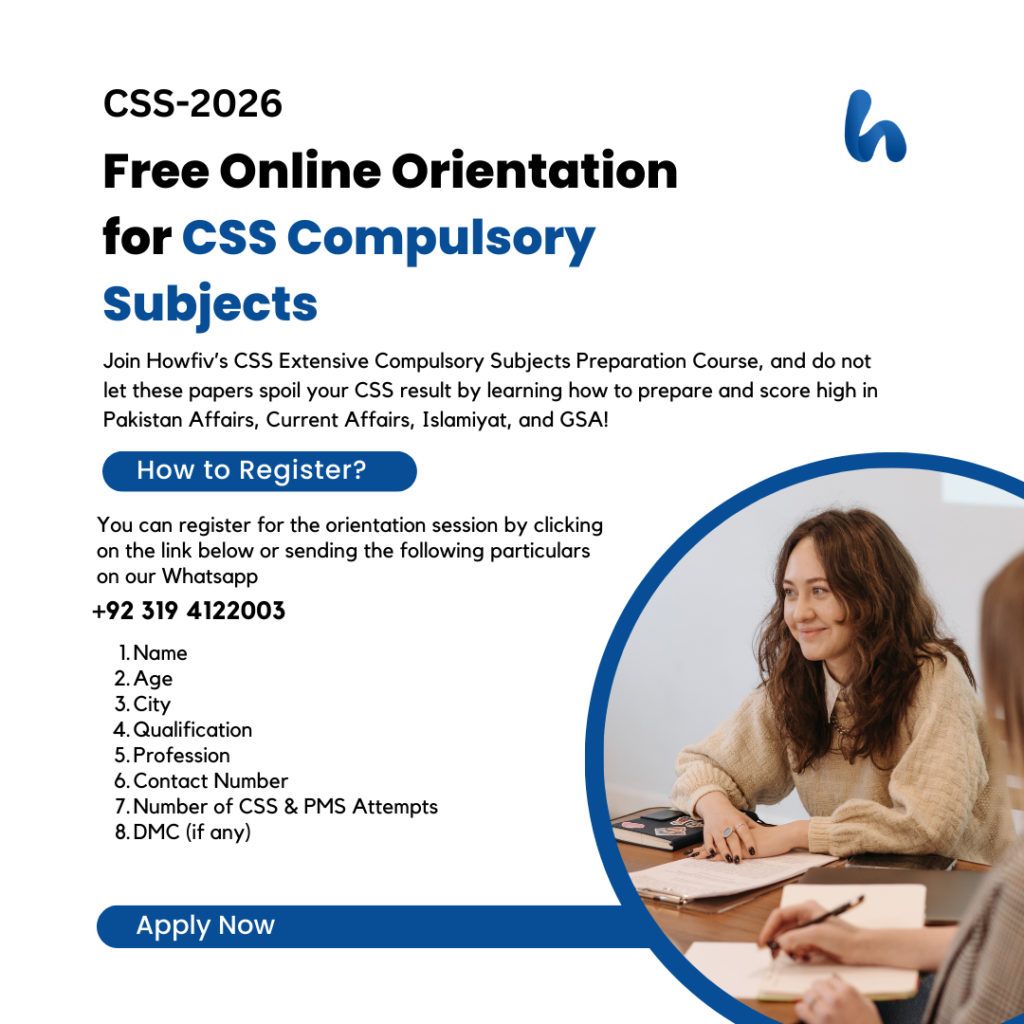
An Analysis of Demographic Diversity in Pakistan
- Ethnic diversity and its implications along different demographics
Nonetheless, the country is a hub of ethnic recognition, such as, Punjabi, Sindhi, Baloch, Pashtun, Saraiki, and many others, each with distinct traditions and aspirations. While this richness of its culture adds vibrancy to its landscape, but often ignites ethnic disputes, political grievances, and governance disorders that always make policymaking and national integration a distant dream. For instance, the Pashtun Thafuz Movement (PTM) emerged after the violation of Pashtun people’s rights in the wake of counter-terrorism operations. Similarly, The Baloch Insurgency particulates the longstanding resentments of the region, considering the demands for greater autonomy, resource control, and political representation. While the falsified response of stakeholders after the emergence of these disputes further exacerbates the ethnic divide and regional tensions. For true national integration, the state owners must move beyond reactionary measures and embrace policies that promote equitable development, fair political representation, and respect for ethnic identities.
- Sectarian differences among various sections of the country
In the same manner, the country is also known for the variety of religions performing in it, with the majority of Muslims but also including Sikhs, Hindus, Ahmadiya, Parsis, Christians, Buddhists, and others. Owing to this religious inclusivity, the country always relishes its unique and assorted standing in the global community. However, this religious coexistence repeatedly proves to be a great difficulty due to extremism fueled by political and ideological factors. These sectarian violence and extremist activities always made the minority vulnerable. In the history of these incidents, the Gojra Riots of 2009 is one of the the most prominent and tragic examples in which Christian neighbours were attacked under blasphemy accusations. In this happening, an enraged mob set fire to these Christians and killed 8 of them, with dozens of them misplaced due to some hatred talks against Muslims religious sentiments. Meanwhile, Hazara Community Quetta (2001-2018) predominantly endured sectarian violence with over 2000 Shias killed. All these severe extremism and violent attacks could only be curbed through genuine efforts to strengthen national harmony and smooth policy making.
- Linguistic diversity and language policy issues in various demographics
However, the linguistic landscape of the state is very enriched and diverse. However, the false policymaking and language riots made this blessing a contentious curse for the country. With only 7% of the population speak the National language, Urdu, making the conditions worse as the remaining population always tries to dominate their regional language over the national. The majority of the nation communicates in Punjabi, Pashtu, Balochi, Saraiki, and Sindhi alongside other regional languages. This multi-lingual society has always proven to be a threat to national integration and policymaking and further exacerbates the vulnerable conditions of harmony and unity in the state. Unfortunately, the Dhaka downfall was initially hyped due to the Bengali Language Movement in 1952. With 56% of the nation speaking Bengali language, Urdu was solely imposed as national language. Which afterwards proved to be a historical consequence of this linguistic discrimination and ended up with the division of the State. This historic lesson underscores the urgency of a comprehensive and inclusive language policy to integrate the nation on a single page. A balanced multi-lingual approach with Urdu’s standing as a National and the preservation of all other regional languages is mandatory for the long-term stability of the country’s landscape.
- Urban-rural distribution in various parts
Meanwhile, the rapidly increasing population, making it 5th most populace state, is a mounting challenge to resource allocation, evenhanded policymaking, and catering to all the regional, political, social, and economic resentments. Moreover, fueling urbanization, with over 37% residing in urban cities, ignites the preserving situations. This rural-to-urban shift put great pressure on the healthcare system, living places, education opportunities, and employment facilities. Additionally, the expansion of cities and merger of site areas into the cities further expand urbanization. Likewise, Lahore, with more than 13 million residents, has become 2nd largest city in the state which ultimately threatens its resource distribution and policy making. All these scenarios urgently require the implementation of comprehensive urban policies which include upgraded infrastructure development, decentralized economic opportunities, and investment in rural areas to mitigate these migrations.
An Analysis of Cultural Diversity in Pakistan
- Tribal and rural traditions
Likewise, the state also enjoys a rich cultural tapestry in which every region and province of the state has its own unique culture. A deep-rooted heritage and diverse cultural identity can be seen through Punjabi pakwan, Sindhi Ajrak, Baloch bravery, and Pashtun Jirga system. This regional identification and versatility become a great threat to national harmony and integration whenever suppressed by stakeholders during policymaking. These indigenous customs and traditions are even endangered by modernization and globalization. For instance, the Baloch Cultural Revival Movement in the wake of Baloch preservation after economic and political marginalization has shown their sentiments. However, lesser government support and minimum representation of these marginalized communities on legal, political, and national forums pose a challenge to national integration, political harmony, and nation upliftment. Indigenous policymaking, equitable representation on all forums, and education campaigns could address the regional reservations and result in a stable and prosperous state.
- Influence of colonial and modern trends
Notwithstanding, the country has a great influence of colonial rule and the legacy of the British rule continues to shape its social, cultural, and political structure that persists to date. One of the greatest influences is the stratification of mediums of education, such as English medium, a representation of elite class, vs. Urdu medium, a middle-class portrayal. English as a medium of instruction was a significant legacy of British rule, but taken as proud language in elite schools, universities, and government institutions. That further reinforces class disparities restricts the middle class from high-paying jobs and ultimately limits them to lower living standards. This linguistic divide creates governance disbalance and non-representation of the underprivileged public in policymaking. To bridge this gap, bilingual learning, equitable participation in policymaking, and social inclusivity are mandatory to integrate the nation.
- Festivities and traditions
Furthermore, the state is a vibrant amalgamation of national, religious, regional, and cultural festivities and trends. All these versatilities and richness of heritage that make the state prominent in international forums could also lead it towards progress and prosperity. The traditions of regional pride and unity, rallies, folk performances, lok virsa, and literary events foster their specific identities and mixture. Sometimes the social, political, and cultural barriers hinder the ways of integration in the nation. Likewise, Basant, once in a time a most popular kite flying festival of the Punjab, has been banned due to security concerns and frequent accidental cases reported. To bring the nation on a single page and to create unification among it, intercultural discussions are the need of the hour.
- Traditional and regional cultures
Similarly, the social constitution of the society has been fabricated particularly owing to its traditional and regional cultures. Moreover, the Panchayat and Jirga system decides the fate of the public and its roots are centuries old where conflicts are solved on old traditions basis. These patriarchal customs are most of the time against human rights that violate basic living standards. For instance, various cases have been seen in the history of the country in the name of Honour Killings, Sawara, Wani, and marriage to the Quran. To resolve the long-term disputes and save male family members, females are forcibly married to someone. According to recent statistics as per government institutions, more than 1000 cases of honor killings have been reported every year. The most highlighted one the case of Qandeel Baloch in 2016 brought global attention to these deep-routed riots and human rights violations. Due to local resistance and social pressure despite a number of laws and legal reforms, the Anti-Honour Killing law (2016), enforcement remains weak. To curb all these menace and make these traditions and cultures a nurturing ground for the state, some effective measures, like, increased participation of women in decision-making and awareness campaigns are necessary to integrate and upgrade the nation.
What are the impacts of diversity on National Integration and Policymaking?
- Economic policies and Resource allocation
The economic policies and resource allocation in the state are generally intertwined with its ethnic, regional, cultural, and demographic diversity. This ultimately gives rise to controversies and disputes between the regions of the country. The controversy of resource allocation is one of the most pressing challenges currently faced by the state. The provinces, Balochistan and Sindh, rich in natural resources but less developed provinces, always show resentment overthe distribution of resources. As both claim marginalization and underprivileged, they argue that rich resources and benefits have been taken by federal government and large provinces. In the same manner, The Riko Diq mining dispute, in which the people of Balochistan refused to transfer the copper and gold reserves of the region to the federal economy. The Indus Water distribution, under the 1991 water accord, has been a continuous contention between the provinces. For instance, Sindh accused Punjab of the consumption of excessive water. The disparities continue to develop regional grievances and ultimately affect the national integration and harmony of the country. Owing to all the disputes, evenhanded policymaking is always been a hurdle for countrymen.
- Role of federalism and devolution
Nevertheless, federalism often plays a crucial role in the diverse states, which have ethnic, regional, political, and social divides. The state’s divides on the basis of ethnicity and demography generally shape the political dynamics of the countries. In the country, long-term grievances, disputes over governance, reservations over resource allocation, and regional bifurcation exacerbate the cracks of disharmony and non-integration inside the local provinces. For instance, 18th Amendment, passed in 2010, transferred the key role to provinces and a step towards provincial autonomy was aimed to address long standing complaints of the region. Moreover, the federalism and its devolution of powers to mitigate the resentment of provinces can also be seen by the Nation Finance Commission (NFC) Awards, to ensure equitable distribution of resources on the basis of population, developmental needs, and revenue generation. While federalism has improved governance by taking significant steps, challenges are still there in the form of ensuring of policy implementation, acclimating regional inequalities, and balancing national and provincial interests to foster national integration.
- Security and counter terrorism strategies
Moreover, in the country maintaining the law and order situation on national level is a persistent hurdle. A comprehensive counter-terrorism strategy by the state institutions is required to mitigate these security challenges. However, the military, intelligence, and law enforcement agencies performed very well in security-prone areas. The National Action Plan 2014, after the massacre of the Army Public School Peshawar is a significant part of these measures. A successful dislodge of terrorist networks was also dismantled by the Waziristan operation, Operation Zarb-e-Azab, and Operation Radd-ul-Fasaad. But slow rehabilitation and governance gaps have raised concerns over long term peace, security, and integration. The socio-economic reforms in conflicted zones and community-driven approach to counter radicalization are necessary to bring the nation on single page.
- Political representation and governance
Similarly, the ethnic and regional divides of the country largely shaped the political landscape of it. In which the majority of political parties always tried to ensure regional concerns over national problems. Such as, Muttahda Qoumi Movement (MQM), Pakistan Muslim League Nawaz (PMLN), and Pakistan Peoples Party (PPP) are mainly regional parties. All these respective political parties, although national parties, promote their respective agenda and benefits regardless of others. To balance national integration with regional autonomy, ethnic democratic governance should be prioritized rather than political divides. To harness this impact on the nation, democratic institutional reinforcement, inclusive policy strengthening, and inter-provincial cooperation should be fostered for political stability and national cohesion.
- Education policy and language issues
In the same context, medium of instruction in education centers remains a serious problem and creates inequities in learning opportunities and socio-economic mobility. This has influenced policymaking for long and created a gap of conformity. With English dominating elite institutions and professional sectors, Urdu serves as a national language. Whereas, regional languages also have indigenous identities. These class based divisions were addressed by introducing Single National Curriculum (SNC), which also tried to standardize education across public, private, and madrassah sectors. However, the dominance of regional language undermines the core purpose of the said approach. To mitigate this impact on national disintegration and regional divides, a multi-lingual, or bilingual education model should be introduced.
- Challenges to National Identity
Furthermore, the ethnic and sectarian divides continuously impacted the national integration and policymaking of the state, creating social unrest, political instability, and security issues. Violent conflicts have been seen due to these ethnic divides whenever amalgamated with economic disparities and regional marginalization. For instance, Karachi, a metropolitan city, has continuously observed ethnic clashes between communities that often lined political rivalries and regional rancour. This sectarian violence always remains a bone contention for national unity. Moreover, targeted attacks and systematic discrimination have fueled the fire. The exemplification of the Quetta Hazara killings has been seen as a persistent issue. To solve this problem, legal protections should be given to vulnerable communities. Fostering interfaith harmony, promotion of anti-discrimination policies, and a successful talk between all these groups are indispensable for founding a cohesive national unity. By implementing all these the diversity of the country could be celebrated rather than the creation of divisions in it.
How could National Integration be strengthened and policymaking be more effective?
As every dark cloud always has a silver lining, the country, irrespective of interstate and intrastate conspiracies, could attain prosperity and progress. To achieve true national integration in the country, the enforcement of an inclusive national identity is obligatory. This only could be possible by promoting shared cultural values and respecting other sector and their sentiments. The endurance and acceptability for others, unbiased education narratives, and celebration of this regional and cultural diversity at the national level could harmonize the nation. Likewise, inter-provincial cultural exchange programs should be organized to make this diverse nation an example of dignity and power. Equitable economic policies and democratic institutions must be strengthened for sustainable integration.
Likewise, strong legislation over extremism and sectarian violence is the need of the hour. The implementation of persistent policies, such as fair distribution of resources, transparent NFC awards, devolution of power through 18th amendment, and development programs for underdeveloped regions can help to reduce inter-provincial tensions. Through dialogue and fair policymaking, the grievances of Balochistan over economic distribution, the concerns of Sindh over water distribution, and the demand of Khyber Pakhtunkhwa for great fiscal autonomy should be consigned. By achieving a governance structure that prioritizes unity, the state can transform its diversity into unity and strength rather than divisions and disputes.
Conclusion
The country’s demographic and cultural diversity undermines both opportunities and problems for national integration and policymaking. Whereas, the country, since its inception, has faced political instability and democratic weakness due to its ethnic, regional, and lingual divides. A national identity promoting inclusivity rather than dominance is the key to long-term sustainable harmony and integration. A well-structured governance model with equal representation of leaders of every community and region can mitigate all these concerns. Similarly, fair resource distribution, decentralization of power, and peaceful talks over sustainable policies could bridge the gap of resentment and aggression. Every citizen regardless of background should feel a sense of belonging and contribution to the progress of the nation.e and prosperity in South Asia.

CSS Solved Past Papers’ Essays
Looking for the last ten years of CSS and PMS Solved Essays and want to know how Sir Kazim’s students write and score the highest marks in the essays’ papers? Then, click on the CSS Solved Essays to start reading them.
CSS Solved Essays
CSS Solved General Science & Ability Past Papers
Want to read the last ten years’ General Science & Ability Solved Past Papers to learn how to attempt them and to score high? Let’s click on the link below to read them all freely. All past papers have been solved by Pakistan’s top CSS GSA coach having the highest score of their students.
General Science & Ability Solved Past Papers

